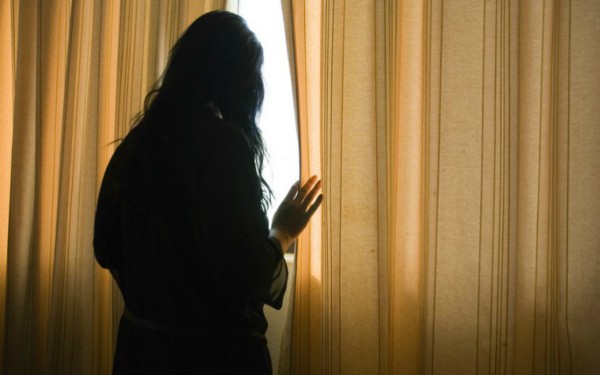
 This article comprises of excerpts taken from a new guide on Community Care Inform Adults about preventive and protective measures for victims of domestic violence. The guide is written by Maria Gray, a former Scotland Yard detective with 30 years’ service with the Metropolitan Police who specialises in adult safeguarding, hate crime and domestic abuse. The full guide covers Clare’s Law, restraining orders and civil preventive orders, and subscribers can read it on Inform Adults.
This article comprises of excerpts taken from a new guide on Community Care Inform Adults about preventive and protective measures for victims of domestic violence. The guide is written by Maria Gray, a former Scotland Yard detective with 30 years’ service with the Metropolitan Police who specialises in adult safeguarding, hate crime and domestic abuse. The full guide covers Clare’s Law, restraining orders and civil preventive orders, and subscribers can read it on Inform Adults.DVPNs and DVPOs, which are provided for by sections 24 to 33 of the Crime and Security Act 2010, are part of a number of different preventive options designed to keep victims safe and give them some breathing space by giving them a temporary respite from the abusive behaviour and allowing access and referral to support services without interference from the perpetrator. DVPNs and DVPOs always prohibit molestation of the person to be protected and, where they live in the same premises, can also prohibit their eviction or exclusion from the premises, prevent the person given the DVPN or DVPO from entering the premises, require them to leave the premises or stop them from coming within a specified distance of the premises.
There is a two-step process:
- When dealing with an incident of domestic violence, if the police have reasonable grounds to believe that one person has been violent or threatened violence against another and that the DVPN is necessary to protect the other person from violence or the threat of violence, they can choose to issue a DVPN. The protected person must be an ‘associated person’ of the person who has used or threatened violence, as defined by section 62 of the Family Law Act 1996 (this includes current or former spouses, partners or cohabitees, relatives, and in relation to a child, where both are parents or people who have or have had parental responsibility or parties to the same family proceedings). Because the DVPN is a police-issued notice, it is effective from the time of issue, giving victims immediate support. A DVPN can only be given by an officer of superintendent rank or above. Breach of a DVPN is not a criminal offence, but a person can still be arrested if they breach one. If a person is arrested, they must be remanded in custody and brought before a magistrates’ court within 24 hours for the court to consider the linked application for a DVPO.
- Within 48 hours of a DVPN being served (excluding Sundays and bank holidays), an application to a magistrates’ court for a domestic violence protection order (DVPO) must be made by the police. The DVPN continues until the court has reached a decision. If the court finds that the victim requires continued protection it may issue a DVPO which lasts for a minimum of 14 days to a maximum of 28 days.
The DVPN and then the DVPO process can be pursued without the victim’s support, or even against their wishes, if this is considered necessary to protect them from violence or threat of violence. However, it is preferable to have the victim’s support and this is always sought. In reaching the decision to issue a DVPN, the authorising police officer must consider the opinion of the victim, as well as any representations made by the person who would be issued with the DVPN, the welfare of any relevant person aged under 18 and the opinion of any ‘associated person’ living at the same address (where the victim and suspect are living together). The court must consider the same factors in deciding whether to issue a DVPO.
The application does not require the victim to attend court (but they can do if they wish), which removes any responsibility for taking action against their abuser from the victim. The victim should be fully supported with access to an independent domestic violence advocate (IDVA) to help them understand safety options.
On deciding whether to issue a DVPO, a court’s decision is made on the balance of probabilities (a lower threshold than for criminal offences), which means they must find it more likely than not that:
- violence or threat of violence has occurred; and
- the DVPO is necessary to protect the victim from further violence or threat of violence.
Violence is not defined in the Home Office guidance but is understood to mean violence and threats of violence in its widest sense.
If the court adjourns the case the DVPN continues to apply until the next hearing. The perpetrator can also be remanded in custody, for example, if they are at risk of committing serious offences or absconding. If a DVPO is breached, the perpetrator can be arrested and kept in custody. Within 24 hours (excluding Sundays and bank holidays) they will go before a magistrates’ court and can be fined up to £5000 and/or sent to prison for up to two months. The victim is not required to make a statement or attend court. Instead, the police officer’s statement is used as evidence, as is any evidence admissible as hearsay. The usual procedures for admitting hearsay evidence do not apply.
Social workers should be aware of local arrangements with police to share information gathered from the ‘right to know’ and liaise with police colleagues regarding ongoing risk management plans during and after an order lapses.
It is important to remember that preventive options within the criminal justice system can only be most effective where there is effective partnership working and meaningful contributions to multi-agency risk assessment conferences (MARACs).
Once issued the court has no power to revoke, vary or extend the DVPO. The duration of the order is to prevent incidents of violence and to allow the person at risk to explore other longer-term safety options. It allows time for an IDVA to provide support and for MARAC agencies to put in place safety measures for the victim and any children.
For more detailed reading see the government’s DVPO guidance.


 Assistive technology and dementia: practice tips
Assistive technology and dementia: practice tips  A trauma-informed approach to social work: practice tips
A trauma-informed approach to social work: practice tips 




 Find out how to develop your emotional resilience with our free downloadable guide
Find out how to develop your emotional resilience with our free downloadable guide  Develop your social work career with Community Care’s Careers and Training Guide
Develop your social work career with Community Care’s Careers and Training Guide  ‘Dear Sajid Javid: please end the inappropriate detention of autistic people and those with learning disabilities’
‘Dear Sajid Javid: please end the inappropriate detention of autistic people and those with learning disabilities’ Ofsted calls for power to scrutinise children’s home groups
Ofsted calls for power to scrutinise children’s home groups Seven in eight commissioners paying below ‘minimum rate for home care’
Seven in eight commissioners paying below ‘minimum rate for home care’
 Facebook
Facebook X
X LinkedIn
LinkedIn Instagram
Instagram
Comments are closed.